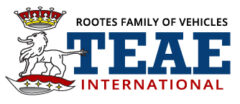Duties
- Maintain club checking account
- Prepare monthly income/expense reconciliation
- Make deposits as received from Membership Chair; reconcile to reporting and segregate payments for United registrations.
- Pay bills as required
- Monitor expenses and alert Board to any significant issues
- Prepare quarterly and annual income/expense statements; interim statements and budgets as requested
- Complete annual tax form (990) for non-profit organizations
- Assist incoming Treasurer with transfer of funds, assuring smooth transition to new bank
Guidelines for Best Practices
- Treasurer chooses bank—usually one that they are familiar with; preferably a national chain and one that would allow deposits by Membership chair or via digital image.
- Strongly suggest two signers on the account, just to have backup in the event of an emergency. Also suggest that Treasurer email Excel workbook to President or another officer, to serve as a recovery tool in the event of emergency.
- Routine bills (newsletter, insurance, postage, etc.) have standing approval; anything else should have review and approval by Board. United Chairpersons can approve United expenses, provided they are in line with pre-approved budget.
- Treasurer should call attention to any significant variances in expenditures and make recommendations for cost savings as possible.
Supplied by Barb Geschke (previous treasurer)
